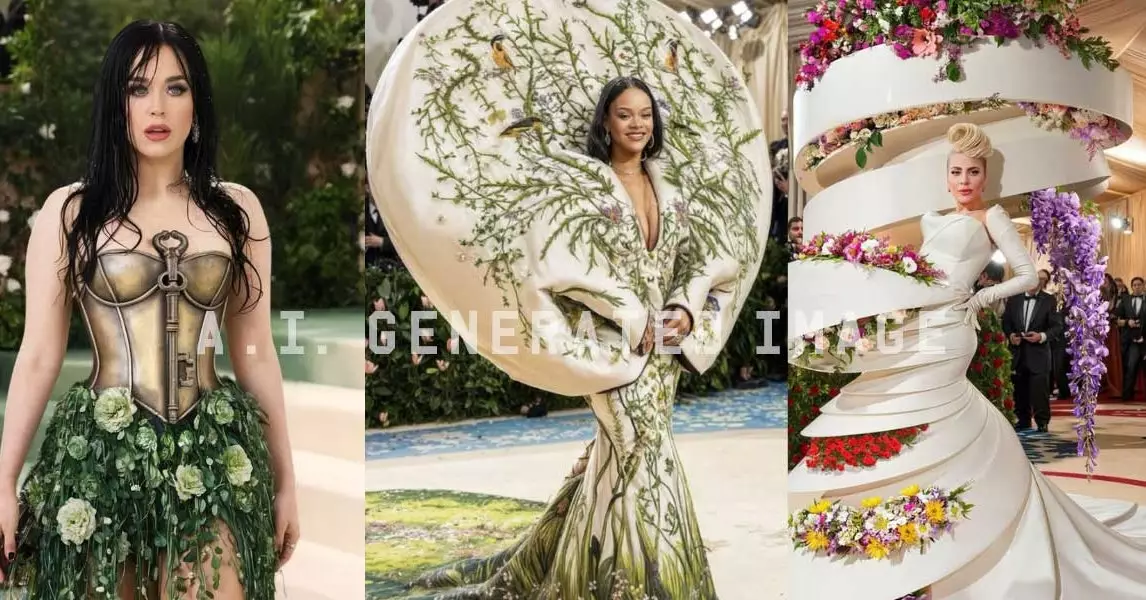The Met Gala, known as one of the most highly anticipated events of the year, recently saw a new contender for stealing the spotlight from music and entertainment celebrities. Generative AI deepfakes took center stage, with images circulating online that appeared to show stars like Katy Perry and Rihanna in stunning outfits. These images quickly went viral, garnering millions of views and sparking intrigue among fans.
Unveiling the Deepfakes
One particularly striking image featured Katy Perry in a gorgeous dress adorned with three-dimensional floral appliqués that seamlessly transitioned into moss. However, a closer look revealed that this image was not real. In fact, Katy Perry did not even attend the event. The same applied to Rihanna, who was also the subject of deepfake photos showcasing elaborate outfits from the Met Gala.
The proliferation of generative artificial intelligence has made it incredibly easy to generate and distribute fake images, creating a new wave of digital deception. With tools that can seamlessly create realistic-looking photos of celebrities in various settings, the boundaries between reality and fiction are becoming increasingly blurred. The Met Gala served as a prime target for showcasing the capabilities of AI-generated deepfakes, allowing fans to envision their favorite stars in curated looks.
The Impact on Social Media
The swift dissemination of these deepfake images on social media platforms like X exemplifies the rapid spread of digital content and the challenge of discerning fact from fiction online. Despite the clear indication that these images were not real, they sparked excitement and engagement among users, with even the stars themselves acknowledging and liking the fake photos.
As generative AI technology continues to advance, the implications of deepfakes in various spheres, including entertainment, politics, and social media, are becoming more pronounced. The ability to manipulate images and videos with such precision raises concerns about misinformation and the erosion of trust in visual media. It is crucial for both creators and consumers to approach digital content with a critical eye and be aware of the potential for manipulation in the age of AI deepfakes.


Leave a Reply
You must be logged in to post a comment.